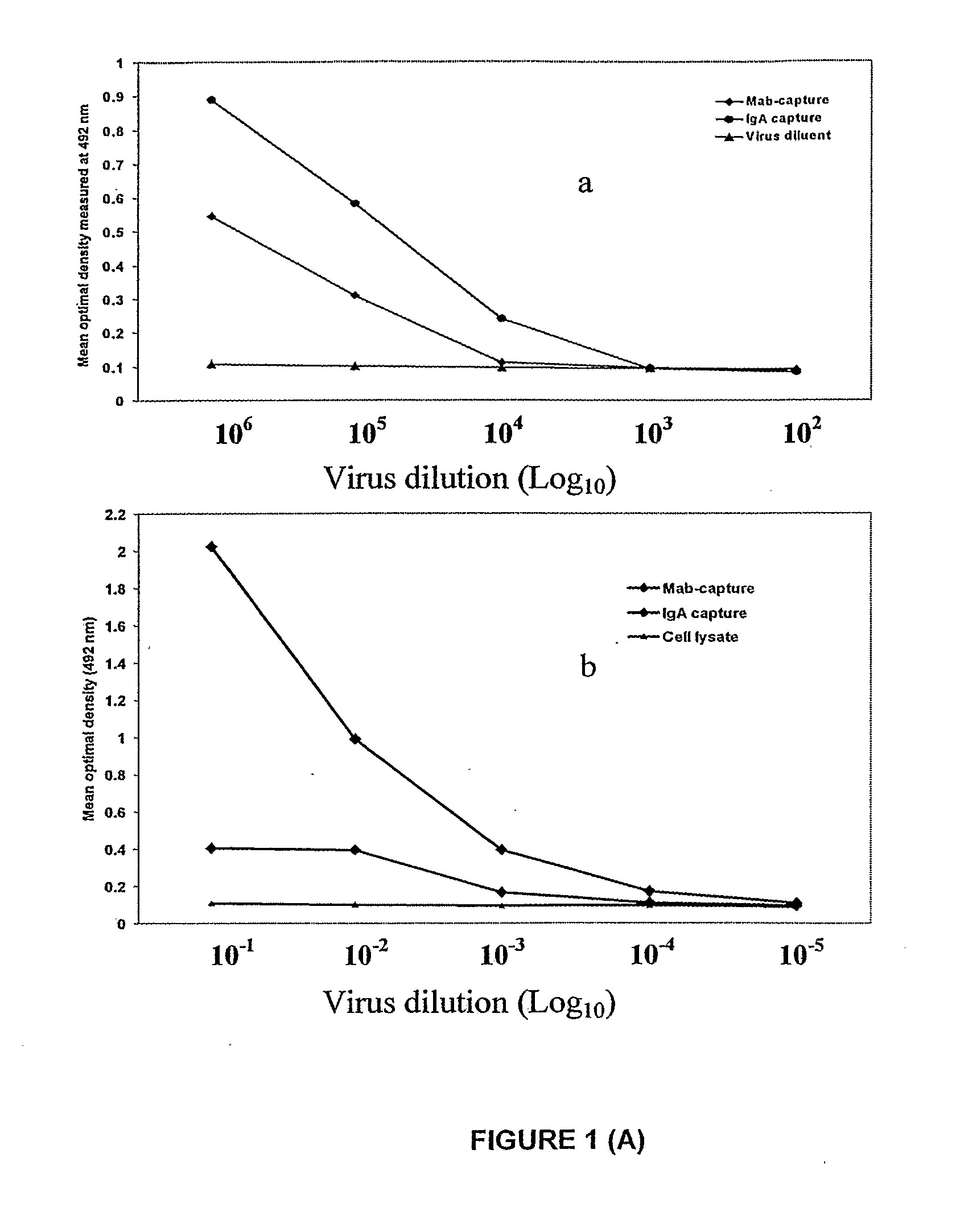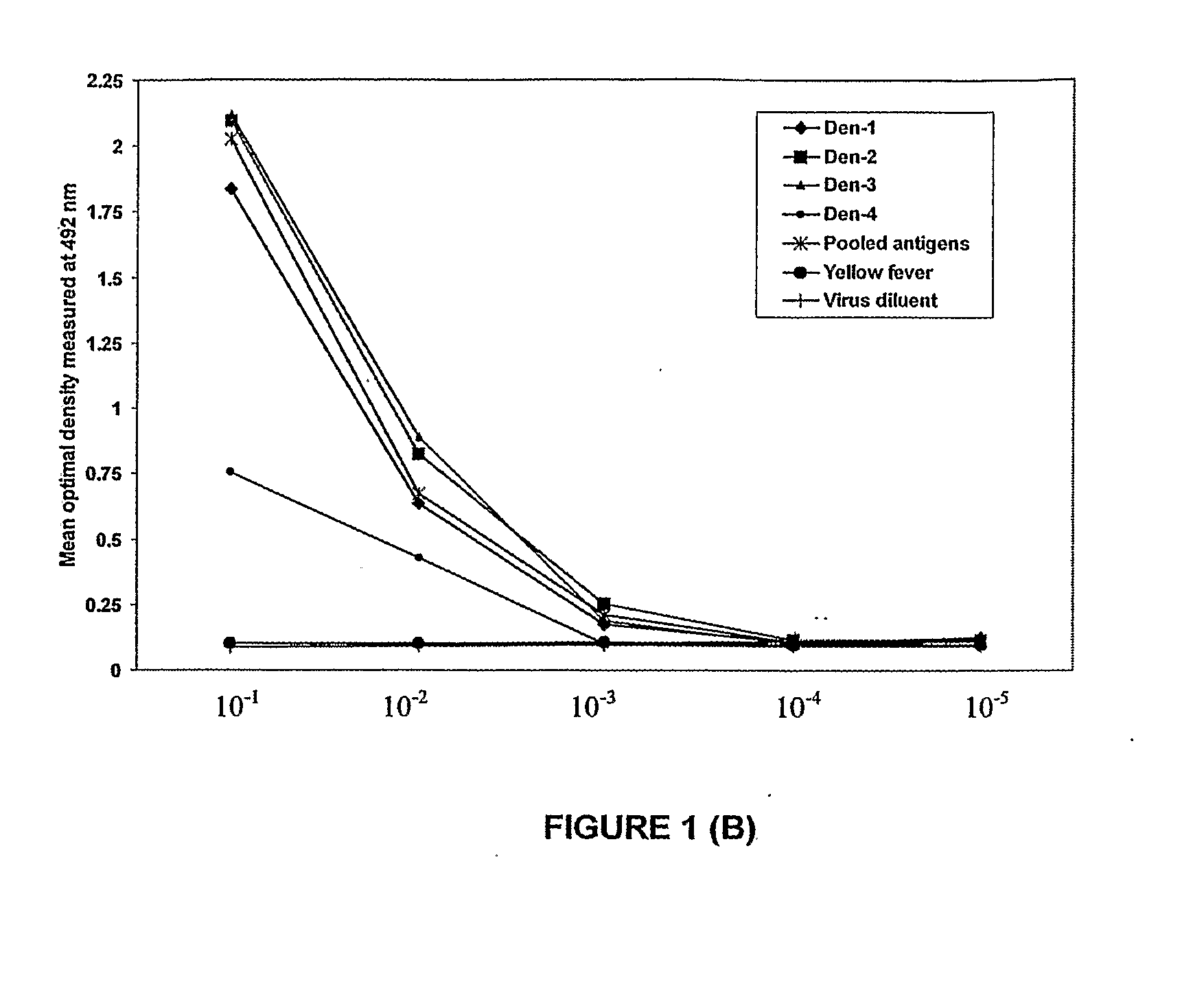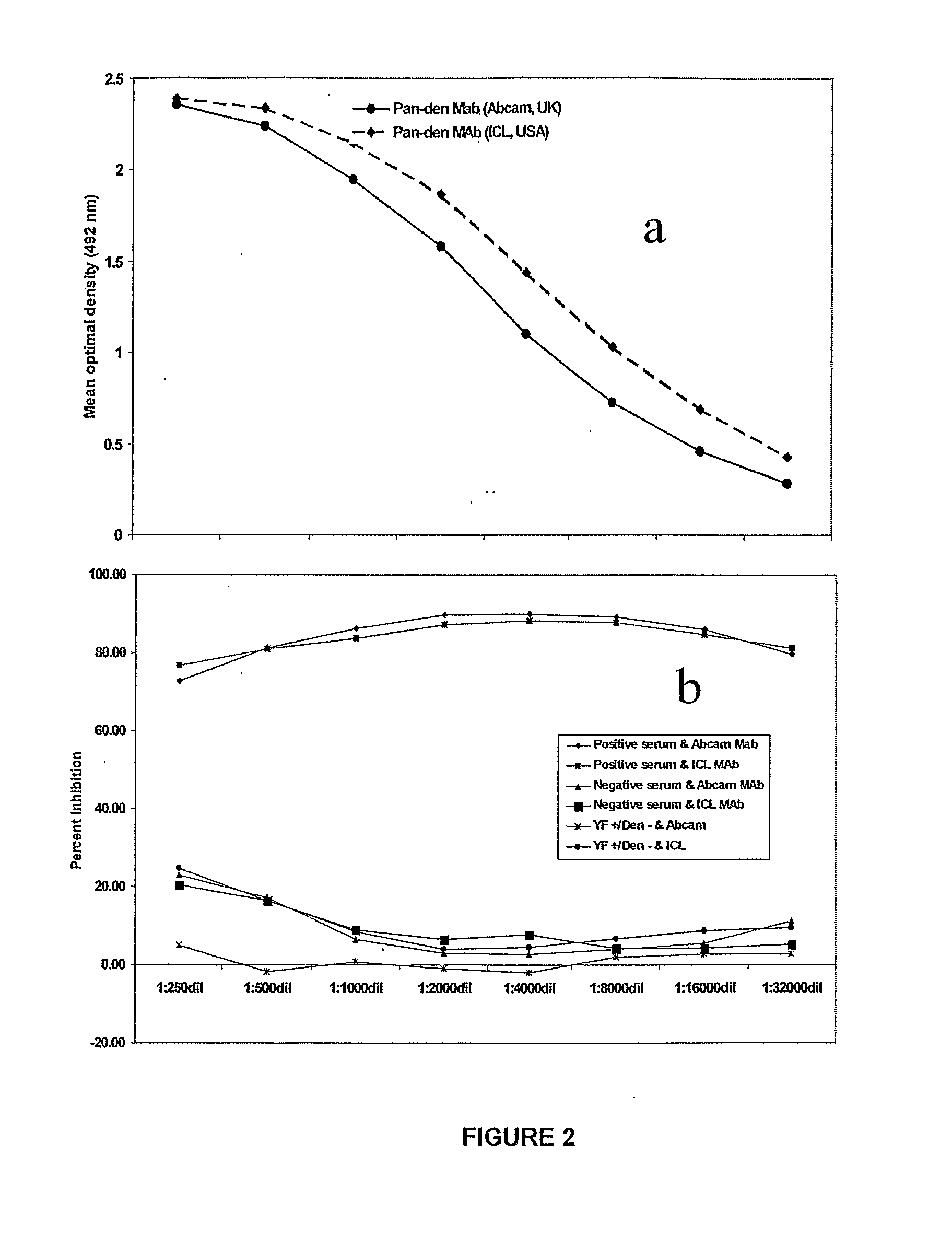Competitive enzyme linked immunosorbent assay (c-elisa) for the detection of a flavivirus specific antibody
a technology of specific antibodies and enzymes, applied in the field of competitive enzyme linked immunosorbent assays (celisa) for the detection of flavivirus specific antibodies, to achieve the effects of high specificity and sensitivity, low cost and straightforward assays, and rapid results
- Summary
- Abstract
- Description
- Claims
- Application Information
AI Technical Summary
Benefits of technology
Problems solved by technology
Method used
Image
Examples
example 1
C-Elisa for the Detection of Dengue Specific IgG
1. Materials and Methods
[0173]1.1 Preparation of viral lysate antigens for C-ELISA: Lysate dengue viral antigens were prepared against all four serotypes of dengue virus according to the method described by Cardosa et al., 2002. Briefly, dengue viruses (5 m.o.i.) were grown in C6 / 36 cells with virus maintenance medium containing 2% fetal calf serum were incubated 4-5 days depending on the development of cytopathic effects and serotypes of the virus. The medium was decanted and the flask with infected cells was washed four times with PBS, treated with 1 ml hypotonic buffer with 1% trix100 for an hour and finally centrifuged at 14000 rpm for 10 minutes. The supernatant was collected tested against dengue group specific and serotype specific monoclonal antibodies by indirect ELISA, and allocated 500 μl in eppendrofs and stored at −70° C. until use.
[0174]1.2 Monoclonal antibodies: Pan dengue specific MAbs were obtained from two different s...
PUM
| Property | Measurement | Unit |
|---|---|---|
| Fraction | aaaaa | aaaaa |
| Fraction | aaaaa | aaaaa |
| Fraction | aaaaa | aaaaa |
Abstract
Description
Claims
Application Information
 Login to View More
Login to View More - R&D
- Intellectual Property
- Life Sciences
- Materials
- Tech Scout
- Unparalleled Data Quality
- Higher Quality Content
- 60% Fewer Hallucinations
Browse by: Latest US Patents, China's latest patents, Technical Efficacy Thesaurus, Application Domain, Technology Topic, Popular Technical Reports.
© 2025 PatSnap. All rights reserved.Legal|Privacy policy|Modern Slavery Act Transparency Statement|Sitemap|About US| Contact US: help@patsnap.com



